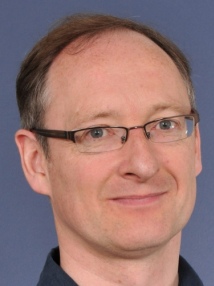Summary
Note there is more than one Tim Evans at Imperial College (the other is a medic) but my ORCID identifier is http://orcid.org/0000-0003-3501-6486.
I am a Senior Lecturer (equivalent to an associate professor) in the Theoretical Physics group, a member of the cross-disciplinary Centre for Complexity Science, and part of the Social and Cultural Analytics Lab in the Data Science Institute here at Imperial. I did my first degree in Natural Sciences (Physics) at Cambridge followed by a PhD here at Imperial, supervised by Ray Rivers. I then spent time as a researcher at the University of Alberta in Edmonton Canada, followed by research positions back here at Imperial, in part as a Royal Society University Research Fellow.
My main interest is in the behaviour of many-body systems both in and out of equilibrium. This is a Tag cloud based on the abstracts of my work since 2004.
Currently, I am interested in ideas falling under the broad area of complexity. In particular, the properties of Complex Networks, such as the "six degrees of separation", intrigue me.
From a theoretical perspective, I draw on ideas from my theoretical physics background such as statistical physics (random walks), geometry (space-time) and information theory (entropy). My present focus is on the analysis of complex networks in the presence of constraints such as geographical space or the arrow of time. These could be internal constraints creating groups in networks, the problem of community detection in networks, or it could be the behaviour of networks constrained by time and networks constrained by space.
In terms of applications, I apply my results to a wide range of areas, but I am particularly interested in social systems. The role of time in the flow of innovation, as captured in the citation patterns of papers and patents, is an example of how I apply my ideas in the field sometimes known as the Science of Science (bibliometrics). I have a long-standing collaboration in archaeology which has led in turn to my interest in geographical models for both ancient and modern contexts.
I have also worked on Quantum Field Theory. My main focus was on many-body problems, a topic known as Thermal Field Theory or Finite Temperature Field Theory.
More Information: More Information about my work can be found under the research links from this page, on my pages at netplexity.org, on the Tim Evans figshare archives. The Tim Evans Google Scholar page has a complete list of my work and there are many other links found on my Tim Evans Publications and Social Networks page. There is more information and my blog on netplexity.org.
Contact Details:
My office in Theoretical Physics is H609 in the Huxley Building on Queens Gate on the corner with Prince Consort Road, 44 (0)20 7594 7837.
My official postal address is
Theoretical Physics, Physics Department,
Imperial College London, South Kensington Campus, London, SW7 2AZ, UK
My blog is at netplexity.org and I am on Twitter at @netplexity.
Full contact details for Tim Evans including maps are on my old informal website.
Teaching
I am helping to develop a new third-year course "Data Science and Machine Learning for Physics" due to run in Spring 2024. I also teach the first half of the third-year Statistical Mechanics course which looks at models of Percolation. In the past, I have given a variety of courses on a wide range of topics such as Network Science, Group Theory, Quantum Field Theory, Quantum Theory of Matter, and Unification (the Standard Model of Particle Physics).
I run a number of BSc and MSci undergraduate projects. All my projects are done in pairs and are theoretically or numerically inclined. The Physics MSc projects are based on similar topics to the undergraduate ones. See the relevant web pages for lists of projects. Through a combination of hard work and simple luck, the work on some of these projects has been turned into research papers.
I am also a personal tutor, looking after the general academic and general welfare of several students, both undergraduate and masters students..
Selected Publications
Journal Articles
Evans T, Chen B, Evans TS, et al., 2022, Linking the network centrality measures closeness and degree, Communications Physics, Vol:5, ISSN:2399-3650, Pages:1-11
Evans TS, Calmon L, Vasiliauskaite V, et al., 2020, Longest path in the price model, Scientific Reports, Vol:10, ISSN:2045-2322, Pages:1-9
Clough JR, Evans TS, 2016, What is the dimension of citation space?, Physica A, 448 (2016) 235-247
Clough JR, Gollings J, Loach TV, et al., 2015, Transitive reduction of citation networks, Journal of Complex Networks, Vol:3, ISSN:2051-1310, Pages:189-203
Expert P, Evans TS, Blondel VD, et al., 2011, Uncovering space-independent communities in spatial networks, Proceedings of the National Academy of Sciences of the United States of America, Vol:108, ISSN:0027-8424, Pages:7663-7668
Evans TS, 2010, Clique graphs and overlapping communities, Journal of Statistical Mechanics-Theory and Experiment, ISSN:1742-5468
Evans TS, Lambiotte R, 2009, Line graphs, link partitions, and overlapping communities, Physical Review E, Vol:80, ISSN:2470-0045
Knappett C, Evans TS, Rivers RJ, et al., 2008, Modelling Maritime Interaction In The Aegean Bronze Age, Antiquity, Vol:82, Pages:1009-1024
Evans TS, Saramaki JP, 2005, Scale Free Networks from Self-Organisation, Physical Review E, Vol:72, ISSN:1539-3755, Pages:026138-1-026138-14
Evans TS, 2004, Complex networks, Contemporary Physics, Vol:45, ISSN:0010-7514, Pages:455-475
Evans TS, Steer DA, 1996, Wick's theorem at finite temperature, Nuclear Physics B, Vol:474, ISSN:0550-3213, Pages:481-496
Chapters
Rivers R, Knappett C, Evans T, 2013, Network Models and Archaeological Spaces, Computational Approaches to Archaeological Spaces, Editor(s): Bevan, Lake, Left Coast Press, ISBN:978-1-61132-346-7

